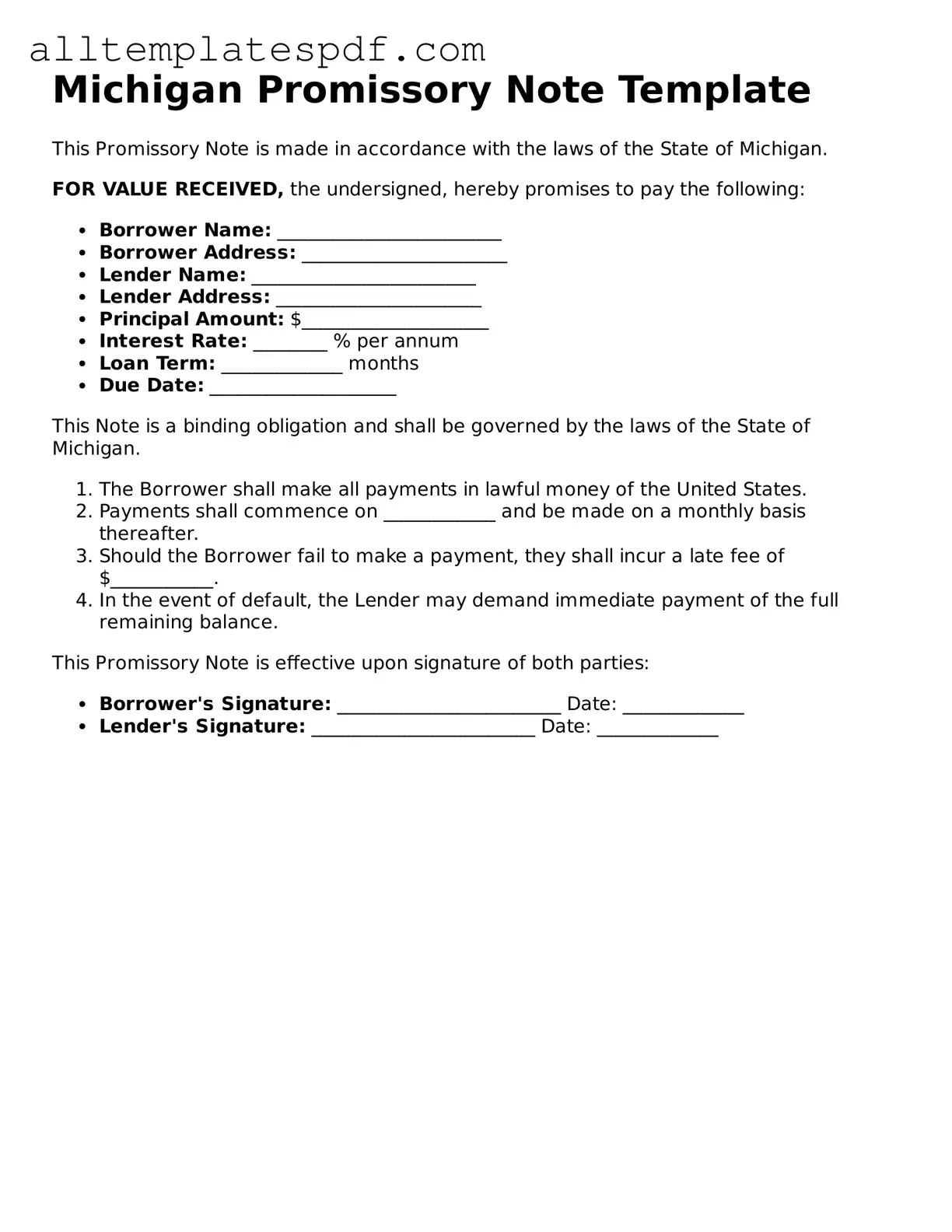Filling out a Michigan Promissory Note form can seem straightforward, but many individuals make common mistakes that can lead to confusion or legal issues later on. Understanding these pitfalls can help ensure that your document is completed correctly and serves its intended purpose.
One frequent error is not including all required information. The form typically asks for specific details, such as the names of the borrower and lender, the loan amount, and the repayment terms. Omitting even one piece of information can render the document incomplete, which might complicate the agreement down the line.
Another common mistake is failing to specify the interest rate. If the loan involves interest, it’s crucial to clearly state the rate. Not doing so can lead to misunderstandings about how much the borrower will owe over time. Additionally, if the interest rate is not defined, it may default to a statutory rate, which may not align with what the lender intended.
People often overlook the importance of signatures and dates. Both parties must sign the document for it to be legally binding. Additionally, forgetting to date the signatures can create ambiguity about when the agreement was made, potentially leading to disputes in the future.
Another mistake is not keeping copies of the signed Promissory Note. After both parties have signed, it’s essential to retain a copy for personal records. This ensures that both the borrower and lender have access to the terms of the agreement, which is vital if any issues arise later.
Some individuals also neglect to review the document thoroughly before signing. It’s crucial to read through the entire note to ensure that all terms are correct and understood. Rushing through this step can lead to errors that could have been easily avoided.
Additionally, using vague language can create confusion. The terms of the loan should be clear and specific. Ambiguities can lead to different interpretations, which may result in disputes. It’s best to use straightforward language that leaves little room for misunderstanding.
Lastly, many people fail to consult a professional if they have questions about the form. While it may be tempting to fill out the document independently, seeking guidance from a legal expert or financial advisor can provide peace of mind. They can offer insights that help avoid common mistakes and ensure that the Promissory Note is valid and enforceable.
